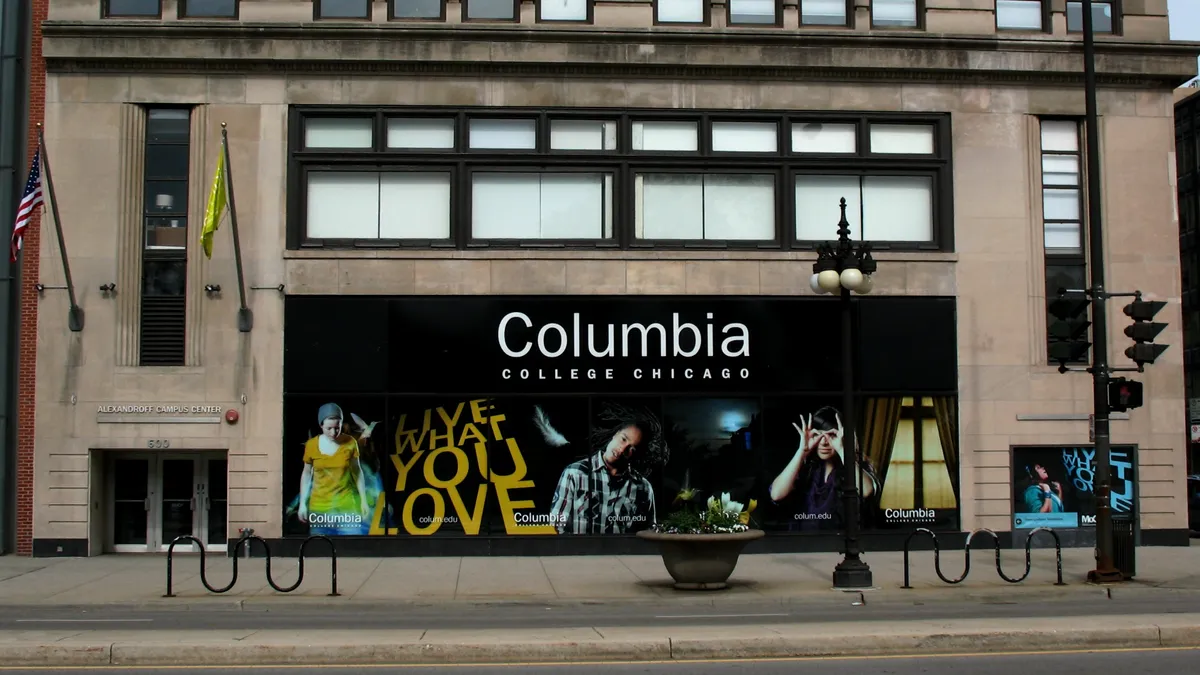Dive Brief:
- Columbia College Chicago leadership has recommended cutting 10 academic programs — five undergraduate majors and five master’s programs — as it looks to pare back its portfolio to roughly 40 undergraduate majors overall.
- The college’s provost also recommended consolidating another 26 programs into 10 through a host of combinations. Columbia leaders expect to make final decisions in early 2025. No changes will be made until fall 2025, and students in phased-out programs will be able to finish them, the college said.
- The private nonprofit college, which focuses on the arts and communications, currently has 58 undergraduate majors, according to a presentation to faculty from Interim President and CFO Jerry Tarrer and Provost Marcella David on Wednesday.
Dive Insight:
Columbia leaders recommended cuts based on the programs' enrollment, financial losses, market share and ability to reduce expenses.
Those on the chopping block run a gamut of subjects. The full list includes bachelor’s programs in environmental and sustainability studies, cultural studies, American sign language, art history and creative writing. The provost also recommended eliminating master’s programs in fine arts, photography and media for social impact, as well as two in theatre.
Three bachelor’s programs — in acoustics, documentary filmmaking and television writing and business — are already in the process of winding down. Another seven programs are slated for review to “achieve efficiency and foster further growth.”
In their presentation, Tarrer and David pointed to a dozen peer colleges, such as the School of the Art Institute of Chicago and the Pratt Institute, in New York. While Columbia enrolled more students than most of those colleges, it also carried the largest number of majors.
Pratt, for instance, had 3,934 undergraduate students as of fall 2022 and 26 majors, according to Columbia's data. In comparison, Columbia reported 6,424 students and 58 majors that semester. Columbia's enrollment has dropped to 5,450 students for fall 2024, a decline of about 15%, while academic offerings remained unchanged, according to Tarrer and David’s presentation.
Of the college’s programs, 12 lose an average of $10,001 to $20,000 annually per student and 38 lose between $5,001 to $10,000 as costs fall short of tuition revenue, often amid shrinking enrollment, per the presentation.
The program cuts come several months after Columbia’s then-President Kwang-Wu Kim described a potential “existential threat” facing the institution.
Kim noted in May that enrollment had fallen 36% since 2013 and that deficits were projected to top $30 million annually in the years ahead if the college didn’t fix its budget woes.
Columbia moved to revamp its curriculum to reduce core credits, a change expected to nix about a dozen faculty positions. It also sought to halve its dean, associate dean and department chair positions through changes to academic structures.
In June, the college announced plans to cut about 5% of its staff and faculty — about 70 positions total — and eliminate another 32 open positions.
Tarrer and David’s presentation noted that Columbia has reduced its administrative budget by 20%.














